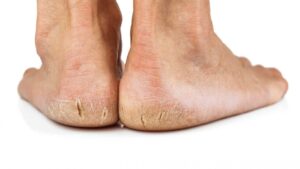 Cause
Cause
Saying we have a “twisted ankle” is just another way to refer to an ankle sprain. This injury is sometimes also referred to as a “rolled ankle”. We twist our ankles when we stretch the ligaments that hold the joint together beyond their capacity. This usually happens after the ankle is forced to twist inward or outward in a forceful, sudden manner.
The initial symptoms of a twisted ankle include sharp pain, swelling around the ankle, and in some cases, bruising. Some people have also reported hearing a popping sound at the exact moment of the injury.
Treatment
The initial treatment for a twisted ankle can be summarised using the mnemonic R.I.C.E. This technique consists of using simple methods in order to improve the initial symptoms caused by the injury.
The different components of the R.I.C.E are:
- Rest: reducing activity will help improve swelling and bleeding. It will also help you avoid further injurie. Resting your twisted ankle can be achieved through the use of crutches, or simply by taking some days to rest up and staying in bed.
- Ice: this will help reduce blood flow to the injured area, which will initially help decrease swelling. It will also provide pain relief thanks to cold’s numbing effects. Ice shouldn’t be applied directly onto the skin; instead, place a cloth between the ice and your skin, and limit its use to 10-15 minute sessions.
- Compression: keeping your twisted ankle compressed will help reduce swelling and will provide the joint with a certain amount of stability; thus avoiding a worse injury. You can use a bandage to wrap your ankle. Make sure your ankle is wrapped snuggly, but not tight enough to cause numbness, since this could actually be harmful to your tissues and delay the healing process. Keep your ankle bandaged during the day and remove the bandage at night. Kinesio tape or a tubular compression sleeve can also be used.
- Elevation: place your foot above the level of your heart. This will help fluids drain from your tissues and reduce swelling. You can achieve this by simply propping your foot up with some pillows while you are laying down, or placing your foot higher than the rest on your body while resting on a sofa.
In addition to these techniques, some people add an extra element to R.I.C.E., turning it into P.R.I.C.E. This extra element is protection, and it can be tremendously helpful while recovering from a twisted ankle:
- Protection: placing a cast or walking boot over the injured area will provide stability and prevent your ankle from suffering any further damages while it is still in the initial phases of the injury.


 Cause
Cause







